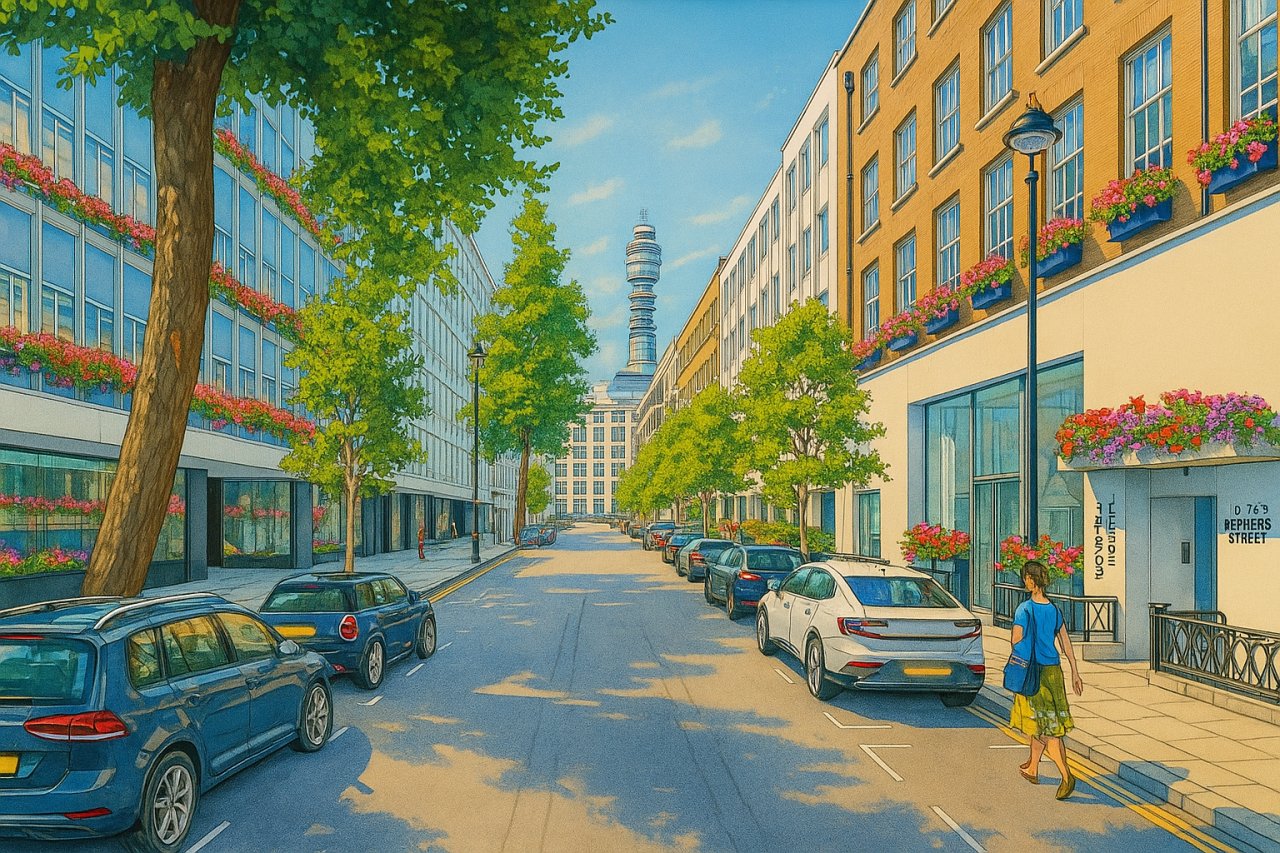
How London's Streets Measure Up: A Global Comparison of Road Widths
London is famed for its history-rich streetscapes, but anyone who’s navigated its older neighbourhoods will know that many of its streets are surprisingly narrow. This article compares the width of streets in London to those in Paris, New York City, Shanghai, and Tokyo — five of the world’s most important cities — to explore what makes London’s road layout distinctive and how it reflects the city’s long and layered past.
Street Widths in Context
London’s Narrow Arteries
In central London, residential streets typically measure between 5.5 and 7 metres wide, while main roads and A-roads range from 7.3 to 10 metres. These dimensions are often shaped by the city’s centuries-old layout. Streets in Westminster, the City of London, and many Georgian and Victorian neighbourhoods were designed long before the age of motor vehicles.
Comparison with Other Major Cities
Let’s see how London compares with some other global cities:
- Paris: Residential streets are generally 8–10 metres wide. Haussmann-era boulevards, built in the 19th century, span 20–30 metres or more, creating a sense of openness in central Paris.
- New York City: Manhattan’s numbered streets are about 18–20 metres wide, while avenues run around 30 metres. This grid-based design allows for wide roads, often with multiple lanes of traffic.
- Shanghai: A modern city with large-scale planning, Shanghai’s arterial roads can reach 40 metres, and expressways may stretch to 50–70 metres wide.
- Tokyo: Residential roads in central areas can be astonishingly narrow — often less than 4 metres wide. However, expressways and major urban arteries are generally 15–30 metres wide, and some are elevated above ground.
Why Are London’s Streets So Narrow?
Unlike cities that underwent wide-scale 19th or 20th-century urban planning, much of London’s layout evolved organically. Medieval street patterns, preserved property boundaries, and the city’s avoidance of sweeping demolitions have left a legacy of tight streets. While efforts like the creation of Regent Street and Kingsway did introduce wider thoroughfares, these are the exception rather than the rule.
Also, many streets are lined with buildings of heritage value, limiting options for widening or modern restructuring. These constraints have encouraged a pedestrian-friendly and dense environment — but also one prone to congestion.
How London Differs from Other Cities
London’s streets are typically more irregular and varied in width than in Paris or New York. The grid system so prominent in North American and many Asian cities is rare in London. Paris benefits from Baron Haussmann’s 19th-century overhaul, which carved out monumental boulevards and uniform blocks. New York’s Commissioners’ Plan of 1811 laid out a strict rectangular grid that made wide, consistent roads standard. In contrast, London’s layout looks like a maze, especially in older districts.
In more recent cities like Shanghai, wide roads and generous setbacks are common, especially in commercial zones and newly built areas. Tokyo, like London, has many old streets — some only suitable for pedestrians or scooters — but has made more use of vertical road stacking in modern developments.
Expressways and Elevated Roads
London has comparatively few expressways and elevated roads within the urban core. The city rejected many mid-20th-century plans for inner-city motorways, notably those proposed in the 1960s Ringways scheme. As a result, motor traffic tends to use surface-level roads, with the exception of structures like the Westway or the Blackwall Tunnel approaches.
In contrast, cities like Tokyo and Shanghai have extensive elevated highways and multi-level junctions to separate local and through traffic. New York has a number of raised expressways — such as the FDR Drive — while Paris has the Boulevard Périphérique circling the city. London’s equivalent, the North and South Circular Roads, are not grade-separated expressways and often feel like standard urban roads.
Fun Fact: London’s Narrowest Street
A fun curiosity: Bryce’s Passage in the City of London is often cited as one of the city’s narrowest “streets”, measuring under 0.6 metres wide in places. Meanwhile, St. Martin's Lane and similar alleys in Covent Garden reflect how the city’s old pathways have been absorbed into the modern street network.
Quick Facts
- Typical residential street in London: 5.5–7 metres wide
- Typical main road in London: 7.3–10 metres wide
- Parisian boulevards: 20–30 metres wide, much wider than London’s
- New York avenues: approx. 30 metres wide, streets around 18–20 metres
- Shanghai arterials: 20–40 metres; expressways up to 70 metres
- Tokyo residential streets: often under 4 metres; main roads up to 30 metres
- London has limited elevated roads and no inner-city expressway grid
- London’s layout evolved organically, without a uniform planning system
- Many roads in London retain their historic, pre-car dimensions
- London’s narrowest street, Bryce’s Passage, is under 0.6 metres wide
 Painting of How London's Streets Measure Up: A Global Comparison of Road Widths, London
Painting of How London's Streets Measure Up: A Global Comparison of Road Widths, London